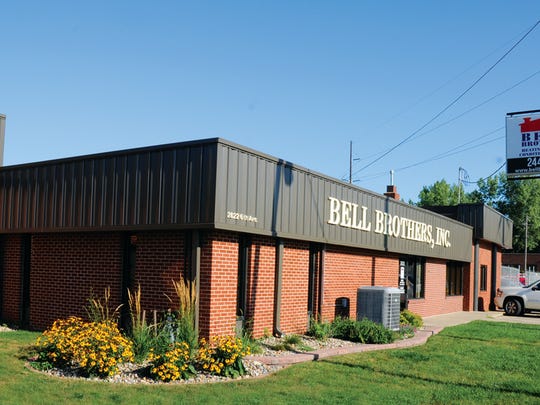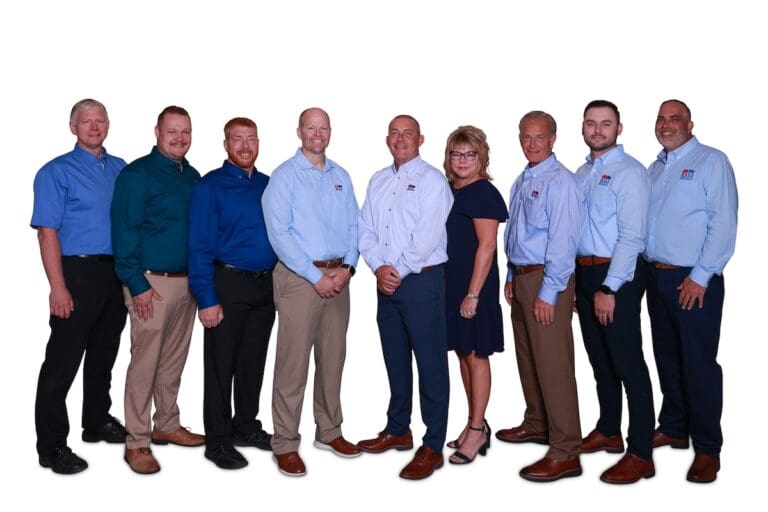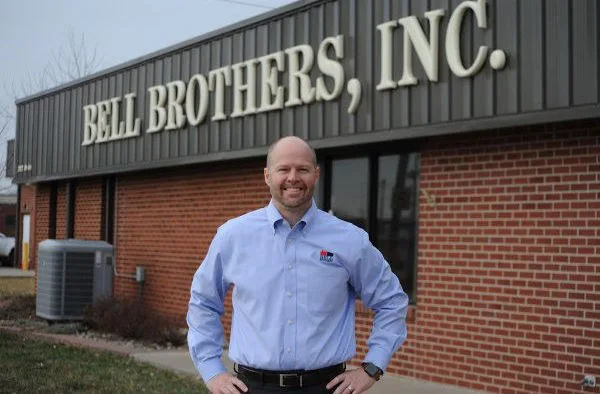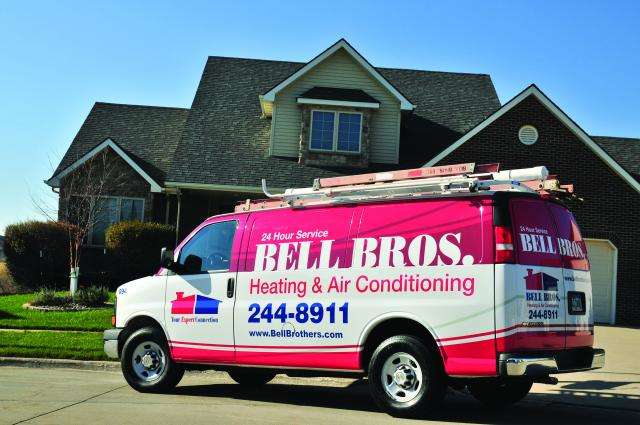Bell Brothers Heating And Air Des Moines

Dealing with a malfunctioning heating or cooling system can be frustrating, especially during extreme weather in Des Moines. One of the most common complaints Bell Brothers Heating and Air receives is inconsistent heating or cooling throughout the house. This often manifests as some rooms being too hot while others are too cold, despite the thermostat being set at a comfortable temperature. Before you call for professional help, let's explore some troubleshooting steps you can take yourself.
Step 1: Isolate the Problem - A Room-by-Room Assessment
The first step is to determine the scope of the problem. Is it a widespread issue, or isolated to a few rooms?
- Walk through your entire house. Note which rooms are too hot or too cold. Pay attention to rooms that are farthest from the furnace or air conditioner, as they are often the first to experience issues.
- Consider the time of day. Does the problem worsen during peak heating or cooling hours? This could indicate an overloaded system.
- Check for drafts. Feel around windows, doors, and exterior walls for drafts. Even small drafts can significantly impact room temperature.
DIY Fix: Sealing Drafts
Simple drafts can often be addressed with inexpensive DIY solutions.
- Caulk around windows and door frames. Use a paintable caulk to seal any gaps or cracks.
- Weatherstrip doors and windows. Replace worn or damaged weather stripping.
- Use door sweeps. Install door sweeps on exterior doors to prevent drafts from entering under the door.
If sealing drafts doesn't resolve the issue, proceed to the next step.
Step 2: Check Your Air Filters
A dirty air filter is one of the most common causes of inconsistent heating and cooling. A clogged filter restricts airflow, forcing your system to work harder and reducing its efficiency. This can lead to uneven temperatures throughout your home and potentially damage your HVAC equipment.
- Locate your air filter. It's typically located in the furnace or air handler unit. Consult your owner's manual if you're unsure.
- Remove the filter. Note the direction of airflow (usually indicated by an arrow on the filter frame).
- Inspect the filter. Hold it up to the light. If you can barely see through it, it's time to replace it.
DIY Fix: Replacing Your Air Filter
Replacing your air filter is a simple and essential maintenance task.
- Purchase a new filter. Make sure you buy the correct size and type for your system. Your owner's manual should specify the recommended filter type.
- Install the new filter. Ensure the airflow arrow on the filter frame points in the correct direction (usually towards the furnace or air handler).
- Replace the filter regularly. A good rule of thumb is to replace your filter every 1-3 months, depending on the type of filter and the air quality in your home. Homes with pets or allergies may require more frequent filter changes.
After replacing the filter, give your system some time to adjust. It may take a few hours for the temperature to even out throughout your home. If the problem persists, move on to the next troubleshooting step.
Step 3: Examine Your Vents and Registers
Proper airflow is crucial for consistent heating and cooling. Blocked or closed vents can disrupt the flow of air, leading to temperature imbalances.
- Check all vents and registers. Make sure they are fully open and unobstructed.
- Remove any obstructions. Clear furniture, rugs, or curtains that may be blocking vents.
- Inspect for dust and debris. Vacuum or brush away any dust or debris that may be clogging the vents.
DIY Fix: Optimizing Vent Placement
Consider how you're using your vents and registers.
- In winter, direct heat towards the floor. This helps warm the lower part of the room.
- In summer, direct cool air upwards. This allows the cool air to circulate more effectively.
- Avoid closing vents in unused rooms. While it may seem like a good way to save energy, closing vents can actually increase pressure in your ductwork and reduce the overall efficiency of your system. It can also lead to frozen coils in the summer.
If adjusting your vents doesn't solve the problem, proceed to the next step.
Step 4: Inspect Your Thermostat
A malfunctioning or improperly programmed thermostat can cause inconsistent heating and cooling. Make sure your thermostat is set correctly and functioning properly.
- Check the batteries. If your thermostat has batteries, make sure they are fresh. Low batteries can cause erratic behavior.
- Verify the settings. Ensure the thermostat is set to the correct mode (heat or cool) and temperature.
- Check the programming. If your thermostat is programmable, make sure the program is set correctly for your schedule. Pay attention to any overrides or temporary settings that may be affecting the temperature.
DIY Fix: Resetting Your Thermostat
Sometimes, a simple reset can resolve thermostat issues.
- Consult your owner's manual. Follow the instructions for resetting your specific thermostat model.
- Power cycle the thermostat. Turn off the power to the thermostat at the breaker box for a few minutes, then turn it back on.
If resetting the thermostat doesn't help, the thermostat itself may be faulty. This is often a sign that a professional needs to intervene.
When to Call Bell Brothers Heating and Air in Des Moines
While these DIY steps can resolve many common issues, there are situations where professional help is necessary. Do not attempt any repairs on electrical components or gas lines. These tasks should always be performed by a qualified technician.
Here are some signs that it's time to call Bell Brothers:
- You've tried the DIY steps above and the problem persists. This indicates a more complex issue that requires professional diagnosis and repair.
- Your system is making strange noises. Loud banging, hissing, or rattling noises could indicate a mechanical problem.
- You smell gas. If you smell gas near your furnace, evacuate your home immediately and call the gas company and Bell Brothers.
- Your system is leaking water. Water leaks can damage your home and indicate a problem with the condensate drain or refrigerant lines.
- Your system is not turning on at all. This could be a sign of a major electrical or mechanical failure.
- Your energy bills have suddenly increased. A sudden increase in energy bills could indicate a problem with your system's efficiency.
- Your system is old or outdated. Older systems are more prone to breakdowns and may not be as efficient as newer models. Bell Brothers can help you determine if it's time to replace your system.
- Your thermostat doesn't seem to be working at all - even after replacing the batteries or attempting a reset.
Why Choose Bell Brothers Heating and Air?
Bell Brothers Heating and Air has a long-standing reputation for providing reliable and professional HVAC services in Des Moines. Our technicians are highly trained and experienced in diagnosing and repairing all types of heating and cooling systems. We offer:
- 24/7 emergency service. We're available to help you when you need us most.
- Upfront pricing. We'll provide you with a clear and detailed estimate before we begin any work.
- Quality workmanship. We stand behind our work with a satisfaction guarantee.
- Preventative maintenance plans. Regular maintenance can help prevent breakdowns and extend the life of your system.
Don't hesitate to contact Bell Brothers Heating and Air in Des Moines if you're experiencing inconsistent heating or cooling, or any other HVAC problems. We're here to help you stay comfortable year-round.
Preventative Measures for Consistent Comfort
Beyond troubleshooting, proactive measures can significantly reduce the likelihood of temperature inconsistencies and system failures.
- Schedule regular maintenance. Bell Brothers offers comprehensive maintenance plans to keep your system running smoothly. Regular tune-ups can identify potential problems before they become major issues. This includes coil cleaning, blower motor inspection, and refrigerant level checks.
- Invest in a smart thermostat. Smart thermostats learn your habits and adjust the temperature accordingly, optimizing energy efficiency and comfort. They also allow you to control your system remotely.
- Consider duct cleaning. Over time, dust and debris can accumulate in your ductwork, reducing airflow and affecting air quality. Bell Brothers can assess your ductwork and recommend professional cleaning if necessary.
- Improve insulation. Proper insulation helps maintain consistent temperatures throughout your home and reduces energy consumption. Consider adding insulation to your attic, walls, and crawl spaces.
- Seal windows and doors. As mentioned earlier, sealing drafts is crucial for maintaining consistent temperatures. Regularly inspect and repair any cracks or gaps around windows and doors.
By taking these preventative measures, you can ensure that your heating and cooling system operates efficiently and provides consistent comfort for years to come. And remember, Bell Brothers Heating and Air in Des Moines is always here to help with any HVAC needs you may have.
Troubleshooting Supplement: Understanding Your System Type
Different types of heating and cooling systems require slightly different troubleshooting approaches. It's helpful to understand the type of system you have to better diagnose potential problems.
- Forced-Air Systems (Furnaces and Air Conditioners): These are the most common types of systems. As described above, filter changes, vent obstructions, and thermostat issues are common culprits.
- Heat Pumps: Heat pumps provide both heating and cooling. In addition to the issues mentioned above, heat pumps can experience problems with defrost cycles or refrigerant leaks. If your heat pump is constantly running in emergency heat mode, it's likely a sign of a problem.
- Boilers and Radiators: These systems use hot water or steam to heat your home. Common problems include low water pressure, air in the system, and malfunctioning zone valves.
- Ductless Mini-Split Systems: These systems offer individual temperature control for each room. Common problems include filter clogs, refrigerant leaks, and control board issues.
Knowing the type of system you have can help you narrow down the potential causes of inconsistent heating and cooling and communicate more effectively with Bell Brothers technicians when seeking professional assistance.










